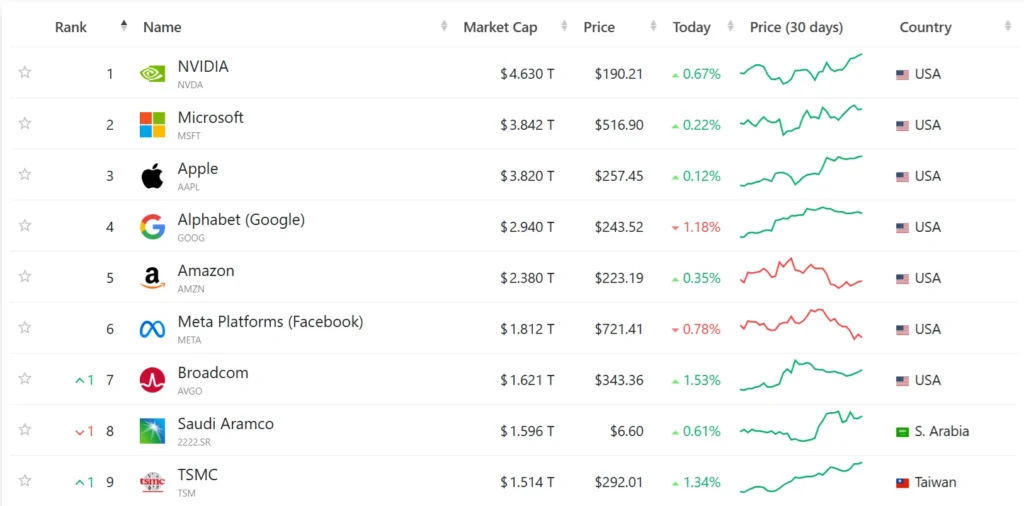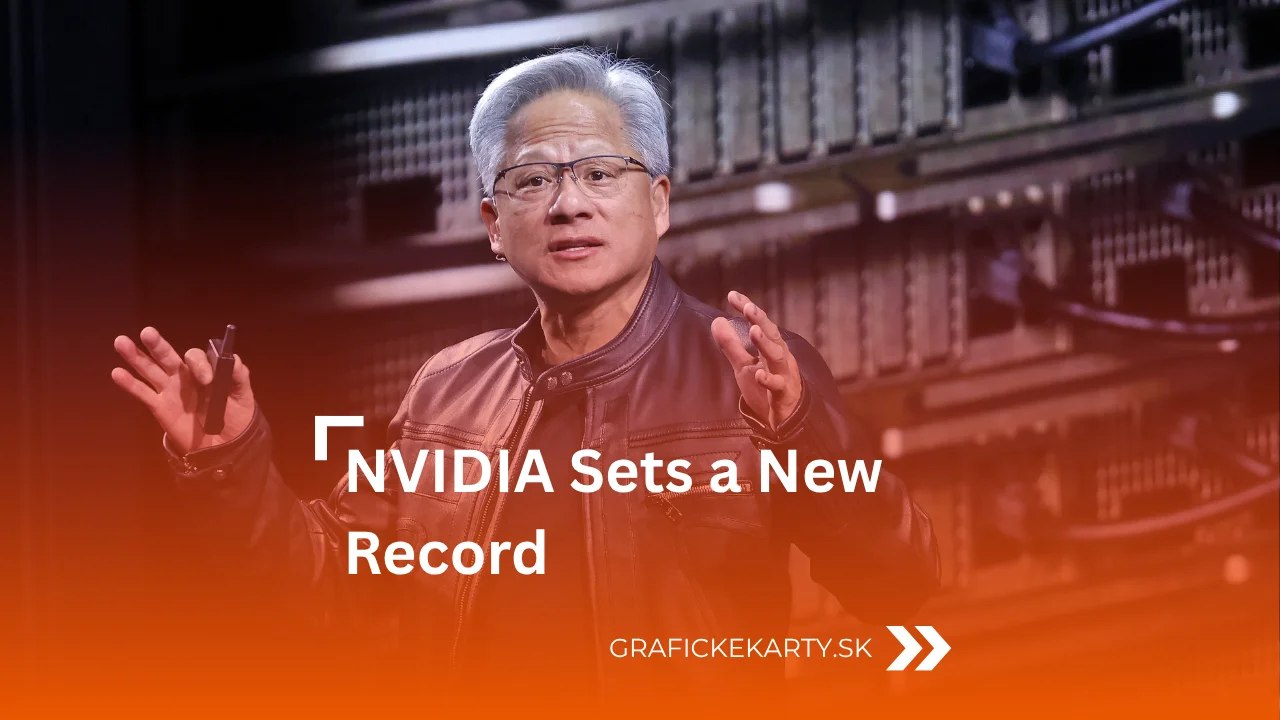A few days ago, a record fell that no one expected so soon. Nvidia surpassed the $4.62 trillion mark and became the most valuable company on the planet. It overtook both Microsoft and Apple and sent a clear signal – the era of artificial intelligence has its king. For investors, it’s a watershed moment; for gamers and tech enthusiasts alike, it’s a moment that connects the past with the future.
From playing cards to the AI engine
A decade ago, few would have guessed that graphics cards designed primarily for games would one day become the cornerstone of artificial intelligence. In 2020, Nvidia had a market value of “only” around $500 billion. So in five years it had grown by a whopping 700%. Today, it controls more than 80% of the GPU market for training AI models, and its chips can be found in supercomputers, research centres and the data halls of companies like OpenAI and Google. What once started as a GeForce card for the gamer at home at his desk is now powering a revolution across the tech world.
Just look at the numbers. In the third fiscal quarter of 2025, the company earned $35.1 billion, of which a whopping $30.8 billion was brought in by data centers – that is, GPUs designed for AI and servers. GeForce‘ s gaming segment made 3.3 billion, less than 10% of revenue. While it may seem that gamers have taken a back seat, the opposite is true. It was Nvidia’s years of experience in developing gaming graphics that gave it the head start it needed to transform the GPU into an AI engine.
With the competition breathing down its neck
Today, Nvidia stands above the giants that ruled the market not so long ago. Its market value has surpassed the $4.62 trillion mark, while Microsoft has around $3.84 trillion and Apple around $3.79 trillion. The difference is not small – Nvidia thus has hundreds of billions more than its long-time rivals.
AMD has brought its MI300, but so far has only a unit percent of the market. Intel is trying to break through, but remains strong mainly in processors. While those two are trying to catch up, Nvidia has become synonymous with performance. When you say “AI chips”, most just think of its green logo.

Meanwhile, Nvidia also maintains a legacy in the gaming world. GeForce RTX remains the industry standard, pushing the boundaries with technologies like ray tracing, DLSS or AI acceleration directly in games. Each new generation brings better graphics processing and performance that pushes virtual worlds closer to reality. Even though games are a smaller share of revenue today, they are still at the heart of the brand. Legendary series like the GTX 10 or RTX 30 have defined entire eras of gaming, and it’s this legacy that has allowed Nvidia to grow into what it is today.
From a small company to a global leader
Nvidia’s story began in 1993 in California, when Jensen Huang and two engineers founded a small graphics chip company. The first major success was the RIVA series in the 1990s, but the real breakthrough came with the GeForce line, which became an icon of gaming performance. Since then, Nvidia has grown step by step, and when the advent of artificial intelligence arrived, it was ready.
The company that defines the future
CEO Jensen Huang recently made it clear: “We are at the beginning of the AI era, just as we once stood at the beginning of the Internet era.” So Nvidia isn’t just looking at servers and games. It’s already working on chips for autonomous cars, robotics, healthcare and augmented reality. AI will break into every industry, it says, and its chips will be there.
A strong Nvidia means more innovation for everyone. It means faster development of AI, but it also means pressure on competitors who need to innovate in the gaming segment. And since the company today makes its money primarily on AI, it has the opportunity to invest heavily in the development of next-generation GeForce as well.
Nvidia has thus made history not only as the first company to surpass the $4.62 trillion mark, but also as an example of how a small company producing graphics cards for gamers can become a leader in a global technological revolution. And for those of us who have been following its journey for years, it’s fascinating because even though it is setting the direction of AI today, it still remains a brand that defines what the gaming experience looks like.
